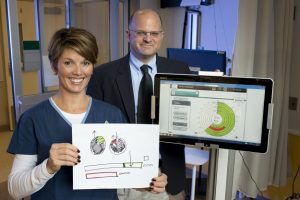
Despite spending $800 billion on technology last year, health care productivity is flat and preventable patient harm remains the third leading cause of death in the U.S.
One reason is that health care is grossly under-engineered: medical devices don't talk to each other, treatments are not specified and ensured, and outcomes are largely assumed rather than measured.
Other industries rely much less on heroism by individuals and more on designing safe systems and using technology to support work. Today a pilot’s cockpit is much simpler than 30 years ago; it is far more error-proof, and built-in defenses enhance safety. By comparison, hospital intensive care units, which contain anywhere from 50 to 100 pieces of separate electronic equipment, appear unchanged.
Changing this will require unprecedented collaboration between health care’s many stakeholders. That’s one reason why this fall the Armstrong Institute and the World Health Organization convened health care leaders, consumers, providers, regulators and private-industry partners to discuss such topics as how to design safer systems at the Forum on Emerging Topics in Patient Safety held in Baltimore.
One effort to design safer systems at Johns Hopkins is Project Emerge. Supported by a $9.4 million grant from the Gordon and Betty Moore Foundation, Emerge is tapping into the wisdom of a diverse team of engineers, nurses, doctors, bioethicists, and patients and family members — 18 disciplines in all from across Johns Hopkins University— to design safer care in ICUs.
A patient treated in the ICU or who has multiple chronic diseases is at risk for over a dozen types of preventable harm and should receive as many as 200 therapies a day. Yet no information system has automated this list of therapies. Emerge seeks to change that by using systems engineering methods to leverage technologies and create better processes that ensure patients always receive needed treatments.
Integrating medical devices, for example, would remove the need for nurses to manually verify pain medication doses delivered by pumps that could easily be connected to electronic medical record — a step that would eliminate human error and save $8 billion annually. But in order for that to happen, device manufacturers must be willing to open their systems and share their data; providers need to say they will no longer purchase equipment from vendors who don’t agree to that standard; and policy makers have to revise pre-EHR regulations to allow electronic double-checks.
Think of it this way: No one would ever buy a plane in which the sensors did not communicate, in which the company that makes landing gear refused to send information about the wheel position to the central computer, as is the case in health care.
The problem in health care is that we do not have a large private sector systems integrator like aviation does with Lockheed Martin or Boeing. While health care needs industry partners to help integrate technology, we shouldn’t wait for someone from the private sector to step up.
Engineers involved with Project Emerge estimate that productivity in the ICU could increase by as much as 50 percent if health care IT systems were integrated and technology was optimized to help health care providers work more efficiently. If we did this, we would solve healthcare’s cost problem.
This is a tremendous opportunity not only to reduce waste, which is estimated to make up one-third of all health care costs, but more importantly to reduce preventable patient harm and improve patient outcomes and experiences.
A recent study suggested that over 400,000 people die each year in the U.S from medical errors. In aviation terms, this is equal to five jumbo jets crashing per day, killing all 250 people on board. The public would not tolerate this; the problem would get deserved attention and the risks would be decreased. It is time preventable harm gets the attention it deserves, not by asking clinicians to be heroes, not by giving clinicians another paper checklist, but by working together to design a safe system.
To learn more about Project Emerge, read this article in Dome, Johns Hopkins Medicine’s employee publication.
Pingback: Re-engineering health care for safety and cost savings | jhublogs
This is one of THE most important issues in health care today. EVERYONE should be talking about and championing this!! Otherwise retraining and blaming will continue unabated.
This is a very important issue. I represent a solution for early detection of patient deterioration on the general care floors. No "wiring up" of the patient is necessary because a sensor is under their mattress which surveys Heart Rate, Respiration Rate and Motion. Refer to American Journal of Medicine article out this month: "Continuous Monitoring in an Inpatient Medical-Surgical: Unit: A Controlled Clinical Trial".
I have read all the articles and am so proud of my son Dr. Peter Pronovost and each and every person associated with the Armstrong Institute.You all have performed miracle in the field of health care.I'm sure you all have down times,but I know your dedication to patient safety will overcome the down times.Our country needs dedicated people as all of you are..I also know the amount of time you all have invested to help the health system.It is amazing what you have accomplished.
Thank you,
I don't think the title of your article matches the content lol. Just kidding, mainly because I had some doubts after reading the article. https://www.binance.com/it/join?ref=S5H7X3LP
Absolutely loved reading this! Watch ary live stream online in HD — live coverage, schedules, highlights, replays, and expert analysis. Fast, reliable streaming on mobile and desktop, anywhere.
Can you be more specific about the content of your article? After reading it, I still have some doubts. Hope you can help me.